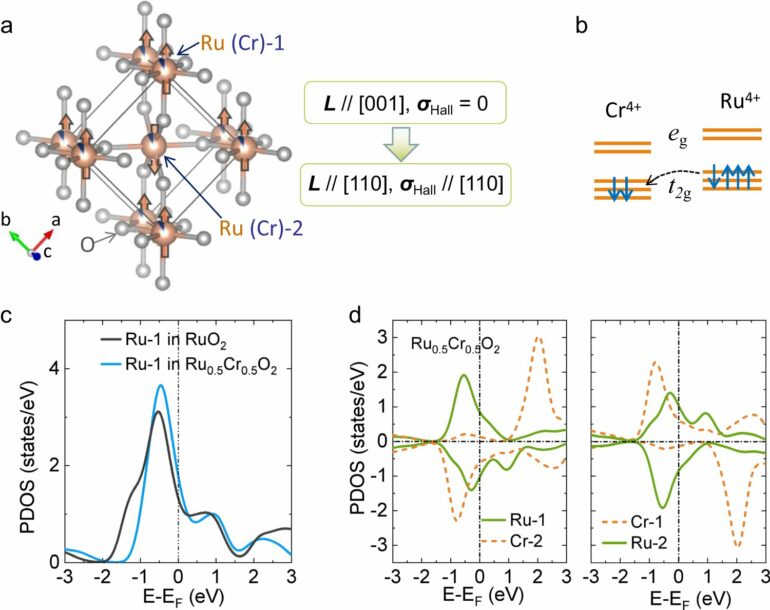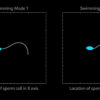A new magnetic material developed by RIKEN physicists could boost computer memory storage by enabling higher memory density and faster memory writing speeds. Their research has been published in the journal Nature Communications.
Memory devices such as hard disks store data by creating different magnetization patterns across a magnetic material. They use magnetic materials known as ferromagnets—materials such as iron and cobalt in which the magnetic fields of individual atoms align with one another when a magnetic field is applied.
However, ferromagnets aren’t ideal for data storage. “The trouble with ferromagnets is that neighboring areas can interfere, causing spontaneous magnetization that corrupts data. So you cannot have a high memory density,” explains Meng Wang of the RIKEN Center for Emergent Matter Science. “In addition, switching magnetization patterns is slow.”
Antiferromagnetic materials, in which the magnetic fields of adjacent atoms tend to line up in opposing directions, are promising for addressing these challenges. But because magnetization cannot be observed in antiferromagnets, physicists would need a different technique to encode and read out data.
For the past 20 years, physicists have been suggesting that certain antiferromagnetic materials could support a different kind of behavior, called the “anomalous Hall effect.” It could be used to manipulate electrons in antiferromagnetic materials to store and readout data.
The conventional Hall effect was first observed in non-magnetic materials more than a century ago by American physicist Edwin Hall. When an electric field is applied to a conducting material, the electrons move in a straight line along the material, parallel to the electric field. But Hall discovered that when an external magnetic field is also applied, the path of the electrons bend.
Later, Hall discovered that this bending can happen in some magnetic materials too, even when no external magnetic field is applied—a phenomenon that was dubbed the anomalous Hall effect.
Now, Wang and colleagues have demonstrated the anomalous Hall effect in an antiferromagnetic metal containing ruthenium and oxygen, with no magnetic field. The team had to add a small amount of chromium to the crystal, which slightly changed its symmetrical structure, enabling the effect.
The anomalous Hall effect had previously been seen in more-complex types of antiferromagnets. But this is the first time the effect has been observed in an antiferromagnetic metal that has a simple co-linear structure, which makes it attractive for practical applications.
“This material is very easy to fabricate in thin film,” says Wang. “We hope our work inspires others to search for other materials that are cheap and easy to make.”
More information:
Meng Wang et al, Emergent zero-field anomalous Hall effect in a reconstructed rutile antiferromagnetic metal, Nature Communications (2023). DOI: 10.1038/s41467-023-43962-0
Citation:
Electron-bending effect could boost computer memory (2024, March 26)



